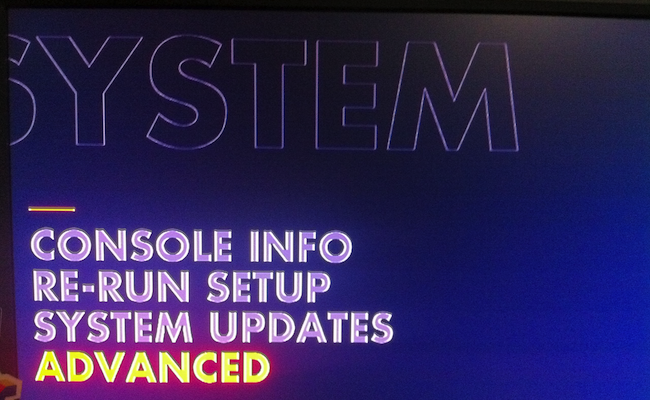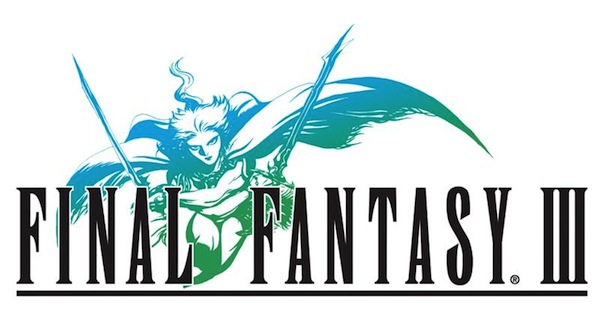
“A first hand look at the new OUYA console, fresh off the Kickstarter production line. Does it stand up to the hype? A detailed review on what to expect from the new open source console that promises to revolutionize gaming.”
So with all the recent commotion about the OUYA, is it really the future of console gaming? I’ll be honest, and say not by a long shot. At least, not yet anyway. The OUYA project was founded in 2012 by Julie Uhrman, an old hand in the games industry, and brought to life via Kickstarter (and the $4m+ that it generated from backers) as a console which I now have sitting in my office. When the project was first pitched on Kickstarter, under the tagline “The Gaming Revolution Will Be Televised”, I was pretty excited and it didn’t take me long to hastily dig out my wallet from a pool of my own salivation: An open source, community driven console where hacking and modding isn’t just allowed by the developers, but is actively encouraged? The possibilities alone had me hooked.
This was back in July of last year. However, as the weeks quickly passed by I almost forgotten that had even ordered one, save for a few mentions here and there in the general press about it’s progress. Finally, a couple of weeks ago I received an email from OUYA Inc. telling me that my unit had been shipped, and once more my excitement had been rekindled! What arrived however, and the experience that followed was something quite different to what I was expecting.
I only ordered the basic package through the Kickstarter campaign, which was enough to get me just the console and a controller, both of which are sleek in their design. The controller is rather reminiscent of the old Gamecube controllers, in that it feels like it’s been perfectly molded for a human hand. It’s comfortable to hold, with the buttons and analogue sticks in easy reach of your thumbs. You certainly won’t feel like you need to ice your hands after long gaming sessions! The developers have even included a touch pad in the center of the controller to allow for an on-screen cursor, if you so choose, instead of navigating with the control sticks.
So far, so good! The air around me was electric with anticipation while I switched the console on, a feeling that dissipated slightly with the near hour long setup process that followed. An internet connection is required for the initial setup, so I connected it to my wireless network – a connection which the console proceeded to drop several times, like a feeble child trying to hold onto a greased, angry cat. After this initial struggle, however, I was in and ready to go!
… So where did half of my screen go? Right off the mark there were some overscan issues, the extent of which meant that a few inches were missing from all sides of the screen.

“Maybe I can change it somewhere in the “YSTEM” menu…”
This was while it was connected to my 720p screen, and was unfortunately something I couldn’t test on my 1080p screen because the console couldn’t support it. The developers have said that the console can support 720p and 1080p, and the OS does have display and HDMI settings, although they were difficult to read due to the overscanning. Even fumbling through these options couldn’t fix the problem, and while the HDMI settings themselves appear have an “overscan compensation” option, it didn’t seem to do anything; Of course the term “settings” is one I use loosely, since the overscan compensation setting was the only actual setting that could be changed, the rest of the screen was filled with a series of suggestions to change the aspect ratio of the display.

“… maybe under the “TERNAL DISPLAY” settings?”
To say that the OS has a few issues is an understatement to say the least, considering that in addition to all of this, while allowing you to download multiple games and apps at once, doing so will considerably slow down switching between the different menus and even the downloads themselves. Downloads will have a tendency to stop at random, and without being able to pick back up from where it stopped! The aforementioned OS menus aren’t exactly set out in a manner that I would call “intuitive” either.

“Pictured: A dirty, filthy, liar.”
So with a slew of problems like these, there must be a lot of player-developer communication going on… right?
Not really. A lot of people are having the overscan issues I mentioned earlier it seems, and without much in the way of developer support. In fact, the OUYA support site is very much like what you can see in the above link – a lot of questions being asked with very few answers, and it’s reached a point where the most active, and useful site is a community driven site, ouyaforum.com, where the answers come not from the developers, but from users who’ve received and tinkered around with devkits. Most of the answers and solutions found through the OUYAForum site, though, involve modifying the firmware of the console or simply “wait for the next patch”.
My own experience with the official OUYA support, as well, has sadly been fruitless: becoming frustrated with the overscan and display issues, I shot an email off to the OUYA team with a few quick questions in the hope that I might be able to get some help, or, at the very least, an idea on when these issues will be fixed. This was on June 1st, and the first response I received was on June 7th… in the form of an auto-response which explained how sorry they were that they haven’t yet gotten back to me. At the time of the writing of this article, I have still not received a reply back from any of their support team members.

“… and our very “helpful” auto-replies.”
However, this is a games console after all! Let’s put the display and OS issues aside for now, and check out…
… Web games? The games were listed into a few categories, some which made sense and some which didn’t, with the top option being “Staff Picks” – which one would assume would mean the cream of the crop that the developers want to showcase for their fledgling console. While I did eventually find a few games which I genuinely enjoyed, I had to go digging through the awful category lists, since there’s no “A-Z” or “All Games” option, to be able to find them, it turns out that the staff who were in charge at the time of picking the titles to promote had either very low standards or there just wasn’t much at the time to put out there. The three foremost titles in this category were Final Fantasy III, Canabalt HD and Knightmare Tower.
Let’s start with Canabalt: What you get is a limited free version of the game, which I would soon discover is pretty par for the course for all of the games. All games, at least to a point, have to be free to download and play to be on the OUYA’s Discover market, so purchases are made within each game’s menu and no prices are actually listed until you reach the point of purchase – which is great for a “try before you buy” method of testing out what games are fun and what aren’t, however it would still be nice to have prices listed in the games market itself.
For the free version of Canabalt HD, you received five “credits” to use that are re-stocked each day, with a credit being consumed for every continue that you use. For anyone who has played Canabalt before, you’ll realise that five credits would only last about five seconds. This is exacerbated by the fact that parts of the screen are missing, so whereas Canabalt is already a game which requires pretty fast reflexes, it makes things pretty difficult when your reaction time is cut short by parts of the screen being blocked off. Predictably, this lead to my runner making several impressions on the walls of this post-apocalyptic world, enough that future civilisations would probably consider him to be some kind of worshipped being.

“It’s believed that he would smash through walls with the sacred chant of “OH YEAH!”
To the games credit it does offer you a free continue for reaching 5000M in-game, and by purchasing the game ($2.99 AUD) you do receive extra content, in the form of varying modes based around the same core concept, which might make it a game worth purchasing for people into simple platformers like this. But at the same time, it doesn’t offer much more than the core game itself, which is already something you can play for free online – Canabalt HD is just a reworked version of the original webgame which has been around since about 2007. This is pretty indicative of Knightmare Tower, which was also originally a webgame, now turned console hopeful, that offers no extra content for purchasing it through the OUYA store.
Final Fantasy III does stand out from the others, but this is hardly a new game (the OUYA features the Remastered HD version that was released for the DS in 2006, the same version which can also be purchased on the iOS and the Android Market).

“Now with a limited edition “Dead Body Beating Stick™”!”
Which isn’t to say that it isn’t a great game, but while costing a dollar less ($15.99 AUD) than it’s portable counterparts, it has the same issue that the above two games have, as well as many others that feature on the Discover market, that I just can’t seem to get past: All of these games seem more suitable for portable gaming.
A great deal of the games didn’t feel like the kind of games you could sit down and play for an extended period of time – with the exclusion of FInal Fantasy III and a few of the other RPG titles available, most of what’s available feels more like a series of mini games which you might play on your own, or with a friend, a few times, like a disjointed Mario Party without the shitty board game aspect and less in-fighting: but nothing more than that, nothing that has much substance. These are the sorts of games that you might hoard on your phone so that you can whip out one or two on a whim while catching a bus or train, or when you’re waiting in line somewhere – not quality, lasting games, but more like short, entertaining time wasters.
So with all of this in mind, it’s probably becoming more than easy to consider this whole thing a write-off and just forget about it, right? Well…
In the last few days, an update patch has been pushed out which has fixed a few things: Overscanning issues in the OS menus have been fixed, which means I can now see all the settings, but are still present in the games; The menus have been adjusted to make them easier to navigate, including the Discover market, though there is still no “browse all” option for games; And even the OS has been optimised so that multiple downloads will have less impact on switching between menus, or causing the downloads themselves to stop. The developers are definitely listening to the complaints which are coming through from the kickstarter players, which is important because the thing to understand is that this console still hasn’t reached it’s official retail release date yet.
Even with it’s focus on being “By the people”, it has some rather promising titles in the works including “Tower Fall”, a free-for-all, multiplayer shooter that’s sure to cause rifts in friendships like any good head-to-head game should; and “Soul Fjord”, a crazy hack’n’slash blend of Norse Mythology and 70’s funk, from the makers of Quantum Conundrum.
“This better not awaken anything in me…”
While these are just a couple of titles, there’s already a veritable smorgasbord of confirmed titles, which are either coming up or already out. Essentially what we have is finished hardware with an OS which is still being perfected and a community which is still being built, and it’s that second part which is most important. From developing their own titles, to creating new mods and hacks, to establishing groups around popular new games, the idea of the OUYA is to create a solid platform for the gaming community to showcase what it can do in the purest sense of “By gamers, for gamers”.
What we’re seeing now is simply the early stages of something that has the potential for something so much bigger, which will be, for the most part, out of the hands of major developers and its success will almost entirely rely on how much time and effort the gaming community surrounding it. So sure, it kind of still sucks right now, but it’s getting better (slowly, but surely) and after all, we all have to start somewhere, right?










